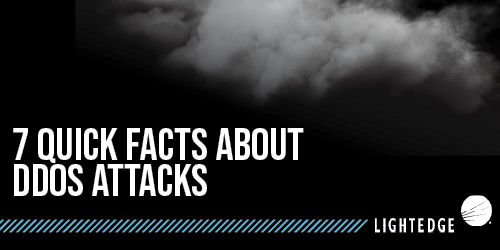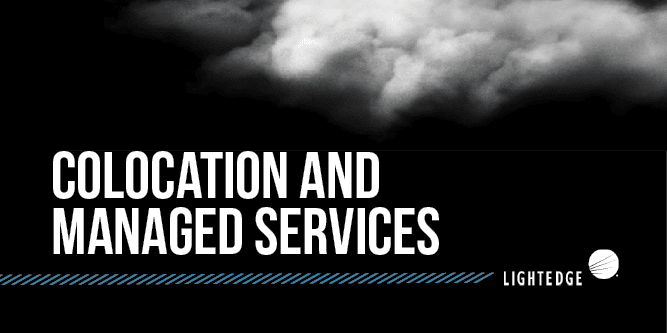What is Cloud Repatriation and When Does It Make Sense?
June 12, 2019

Lightedge
Author

Companies’ enthusiasm for public cloud solutions is waning, as more and more are bringing workloads and storage resources back in-house. In fact, a report on cloud repatriation by 451 Research stated that 20 percent of companies surveyed said that cost drove them to move one or more of their workloads from public clouds to private clouds.
In recent years, many organizations have taken the “cloud-first” approach as they migrated their workloads to the public cloud in order to keep up with IT transformation. With the boom of public cloud migrations, we have already started to see signs of what technology analysts are calling “cloud repatriation”. As organizations realize that cloud is not always the answer to IT performance and cost, they are moving back to traditional data centers or other private solutions.
According to a Network World article, Dave Cope, Senior Director of Market Develop for Cisco’s CloudCenter, said, “We’re starting to get this natural distribution of workloads across existing and new environments … where they make the most sense.” Cope believes that technology is at the point where businesses have the freedom to locate applications wherever the maximum benefits can be achieved.
What is Cloud Repatriation?
IT analysts are describing cloud repatriation as the shift of workloads from public cloud to local infrastructure environments. The current movement has businesses shifting to a private or hybrid cloud approach.
An IDC survey from 2018 discovered that 80 percent of respondents moved cloud workloads on premises or to a private cloud solution within the past year. So, why is this happening? After all, the advantages of public cloud have been touted has being beneficial for everything from security to cost efficiency.
Is Cloud Repatriation Here to Stay?
Is cloud repatriation a real thing or a fleeting trend? According to numerous surveys and reports, cloud repatriation is not slowing down anytime soon. 451 Research’s Voice of the Enterprise (VoTE) Cloud Transformation, Organizational Dynamics 2017 survey stated that 34 percent of respondents said they had already moved their workloads from a public cloud to a private environment (cloud or otherwise). There was a wide range of reasons for this. Many of those reasons were exactly the same reasons that businesses migrated to the public cloud in the first place: cost, security, latency, performance, and scalability issues.
Organizations of all sizes are transitioning, yet it is the larger companies that are making the biggest waves. For example, Dropbox, which was created in the cloud and used Amazon Web Services (AWS), recently moved 600 petabytes of data off the public cloud and adopted a hybrid approach, reported Data Center Knowledge. Dropbox said that the move away from AWS was able to offer them faster performance while saving them up to $74.6 million of operational expenses.
For many companies, a private cloud or private infrastructure environment better suits their needs. In fact, a recent survey by Yankee Group reported that private cloud was preferred 2:1 over fully managed public cloud solutions. Sixty seven percent of respondents favored private cloud services, whereas only 28 percent wanted a fully managed public cloud. The rest of the survey respondents were looking for a hybrid cloud solution.
When Does Cloud Repatriation Make Sense?
If your organization currently uses public cloud solutions like AWS but are no longer receiving the benefits that were once promised, it may be time to make a change. IBM was ahead of the crowd and began promoting their hybrid cloud options as cloud repatriation took hold. But if you are looking for a hybrid or private cloud environment, when does it make sense to make the change?
Major enterprises, such as Dropbox, are choosing to abandon the public cloud for the cost savings. Cost is not the only criterion for leaving, but it is a major one. Here we will cover the different reasons in which cloud repatriation could make sense for your business.
Cost Savings
The high recurring operational expenses of the public cloud can be substantially reduced or even eliminated through cloud repatriation. Jeremy Kurth, CTO of IT services at Winxnet said, “Public cloud offerings can provide value-add compared to on-premise solutions, but it typically comes at a premium in recurring expenses.”
Organizations that were told that public cloud was the easy answer to all of their problems are now realizing that the expense is not relevant to their specific situation. With the cheaper alternatives that are available, public cloud costs just do not add up anymore.
Network World reported that New Belgium Brewing recently migrated its core applications from an off-premises managed cloud to on-premises colocation facility. Travis Morrison, Director of IT at New Belgium Brewing said, “we wanted predictable costs when scaling, and we have talented staff that can manage on-premise equipment.” Morrison explained, “additionally, ROI for cloud diminishes with a hyperconverged stack, as maintenance is simplified.”
A private cloud service offers customers transparency into pricing structures, and the pay-as-you-go approach allows companies to only pay for what they need. According to Standford research, Dr. Johnathan Koomey, enterprises are wasting up to $62 billion per year paying for public cloud capacity they do not need.
In the addition to wasted capacity, large public cloud providers are regularly updating their pricing structure. AWS has made 62 changes to their pricing structure in only 12 years. These regular changes make it impossible for companies to have a long-term plan for the public cloud.
Security
In addition to the costs, many organizations are going through cloud repatriation due to lack of security within the public cloud. CRN reported that Craig Manahan, Practice Manager of data center infrastructure at RoundTower Technologies said he is seeing customers moving away from public cloud after mistakenly “jumping into public cloud with two feet.”
Many public cloud users have misconceptions about data protection and security in the public cloud. They believe that these larger public cloud providers will provide data protection services automatically. When in reality, the customer must take the time to architect the right security and data protection solution on their own or expect to be at high risk for a security breach.
“Cloud repatriation may offer more secure environments and the chance to address multi-cloud issues,” says Carl Freeman, Executive Director of the Cloud and Digital Advisory at business consulting firm EY.
In addition to added security, many businesses are within industries that are heavily regulated against compliance standards. To meet these requirements and reduce the chance of an attack from hackers or damage from natural disasters, companies are putting their most sensitive data into a private cloud.
With evolving technology, IT has become increasingly regulated. Each governing body has their own rulesets. With the varying regulations, running applications on-premises at a specific site can make remaining compliant a little simpler and help to decrease associated risks.
Enhanced Performance
Failing to meet critical operation benchmarks is a sign that applications may perform better in a private environment. Network World reported that Jeff Slapp, Vice President of Cloud and Managed Services at 365 Data Centers said, “Applications that are latency sensitive, have long-running I/O intensive periods or have datasets that are large and require transport between various locations for processing are generally prime candidates for repatriation.”
451 Research’s VoTE survey asked respondents about their reasons for using multiple infrastructure environments to operate individual workloads. Forty-seven percent of them said improving performance/availability was one of the main reasons for leveraging multiple infrastructure environments.
With performance and downtime becoming an increasing issue, moving workloads back on-premise has been shown to help solve that. Of course, an on-premise solution does not completely negate downtime, but it does put control back into the hands of the company.
Control
The shared nature that is public cloud leaves most of the control up to the provider. A major reason for cloud repatriation is that private solutions are designed to put the control back into the hands of the user. A private cloud solution is designed to be consumed only by a single organization. That organization has full control to configure and manage their resources without any restrictions that a multi-tenant solution would have.
“Repatriation provides better control over the applications and enables IT to [better] plan for potential problems,” explains Vinod Pisharody, CTO at Array Networks. Many enterprises that are perfect candidates for repatriation use applications that are mainly static. These kinds of applications can be maintained on-premise where the environment is controllable.
When to Stay and When to Go
Making drastic moves can cause serious operational and financial repercussions. It is important to understand both options and relate them to your specific business use case. In some scenarios, staying put is the better bet. Public cloud vendors generally make the move away from their solution a difficult and expense process.
Careful planning and researching are imperative for a smooth repatriation process. So, should you stay put, or should you go? Here are some factors to consider:
- Are you wasting money paying for capacity that is not being used?
- Are you experiencing regular performance and availability issues?
- Are you regulated against different compliance standards?
- Do your workloads require low latencies?
- Do you have the IT staff bandwidth to take control of your workloads?
If you answered yes to a majority of the questions above, it might be time that you consider cloud repatriation. On the other hand, does your public cloud offer the baseline performance and ease of use that you want? If so, then staying put might be the right decision for the time being.
The key is to perform ongoing cost and performance evaluations to determine whether public cloud or private deployments are best for your workloads and your business.
Is it Time to Bring Your Workloads Out of the Public Cloud?
From a dedicated physical infrastructure to a virtual delivery model, Lightedge has the compliant cloud and hosting solution for your organization. Retain the level of control you want, and the amount of data isolation you require.
Lightedge’s private cloud offerings include:
- Virtual Private Cloud Powered By VMware: Lightedge Virtual Private Cloud takes advantage of the low-cost model of multi-tenant infrastructure and virtualization, while maintaining business-critical performance and security in an ISO 20000-1 certified, ITIL best-practice managed environment.
- Dedicated Private Cloud Powered By VMware: Get the control, performance and security of dedicated infrastructure with all of the advantages of the cloud using our Dedicated Private Cloud.
- Bare Metal Cloud: Lightedge Bare Metal Cloud provides physically discrete, high performance, dedicated servers, storage and network uniquely configured for each customer.
From simply ordering-up capacity in fully managed environments to private clouds that are a customized configuration of infrastructure into any layer of the stack, Lightedge’s world-class facilities built to Tier III standards and talented engineers are ready to accommodate your business’ requirements.
Want to learn more about Lightedge’s private cloud hosting? Contact one of our cloud experts to get started or to schedule your private tour of any of our seven data centers. We have security, compliance and cloud experts standing by to answer any of your questions and to show you how our private environments work, so you can benefit from it yourself.
What to learn more about cloud deployment? Download any of our free resources including, Guide to Assessing your Move to the Cloud, How to Deploy a Secure Compliant Cloud for Healthcare, and Redefining you Network Strategy.


